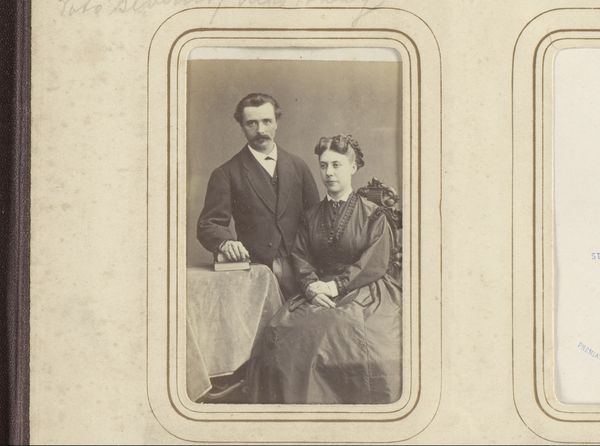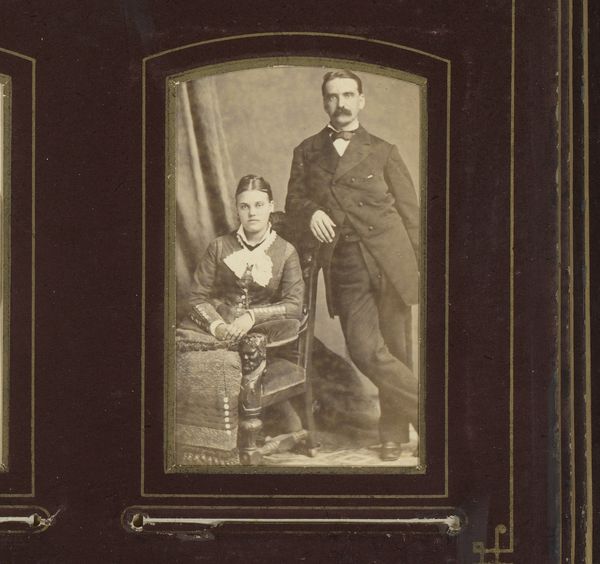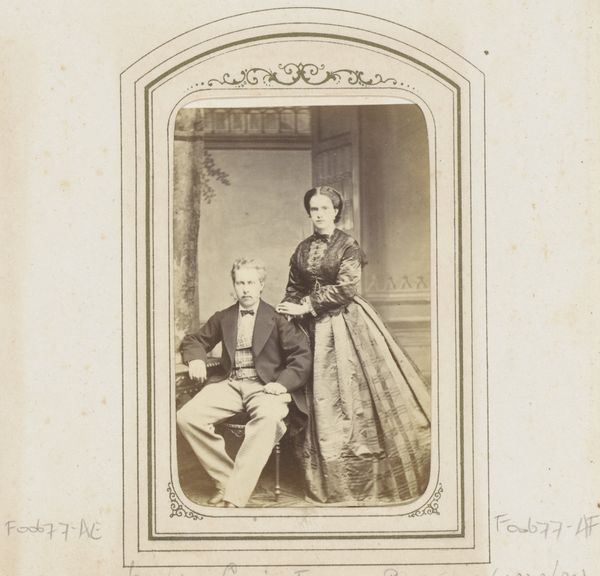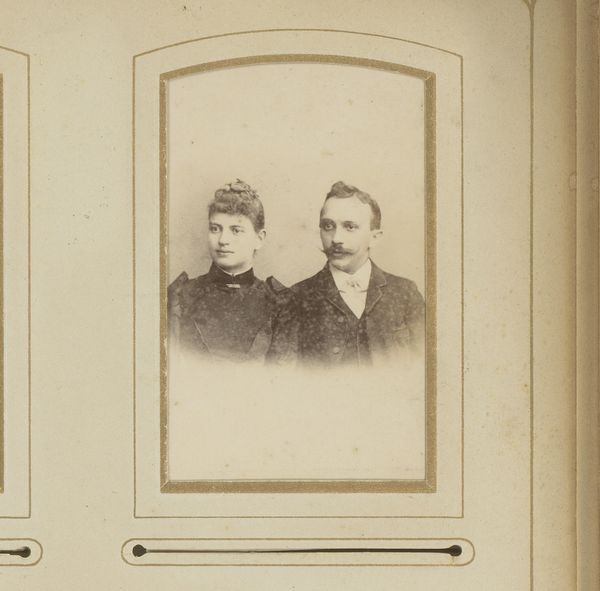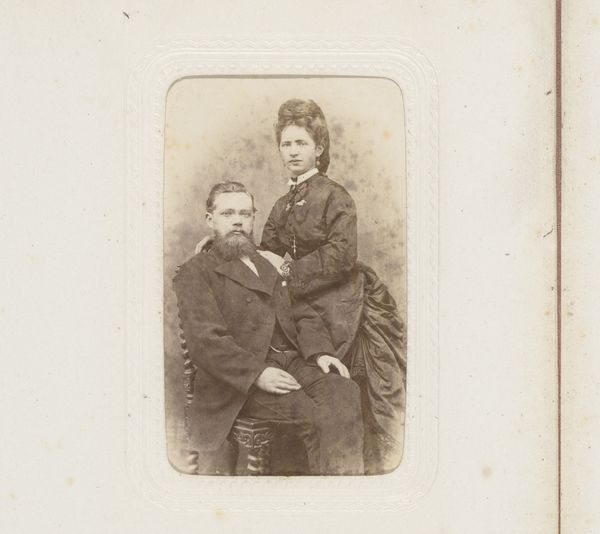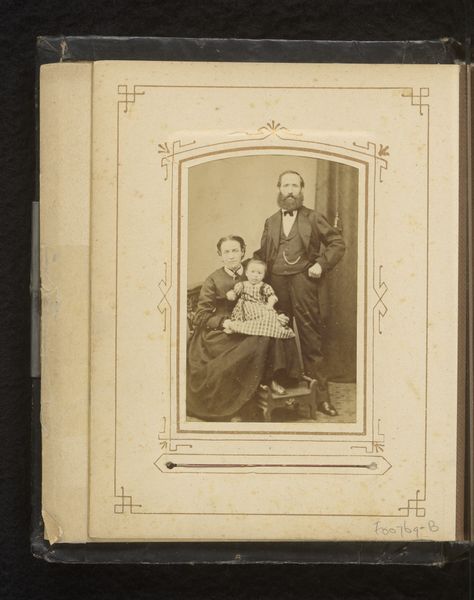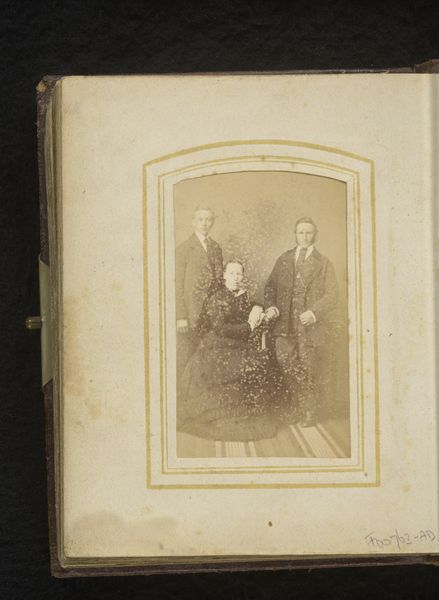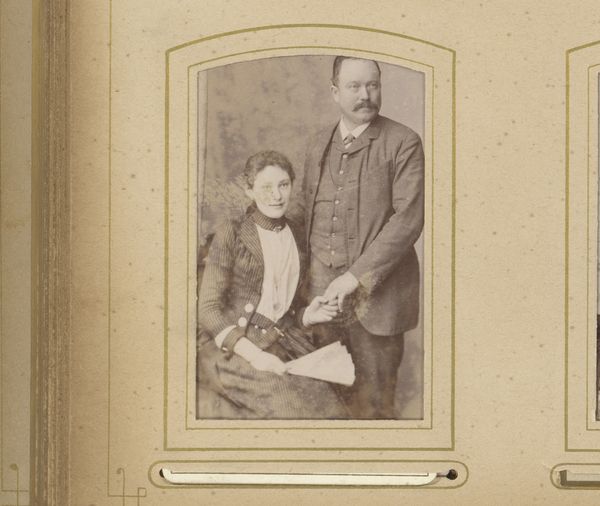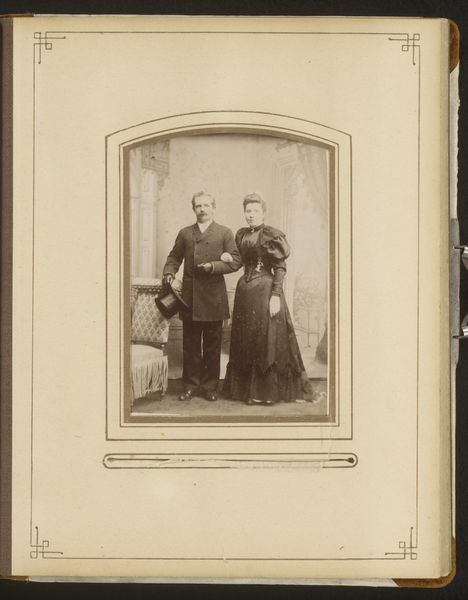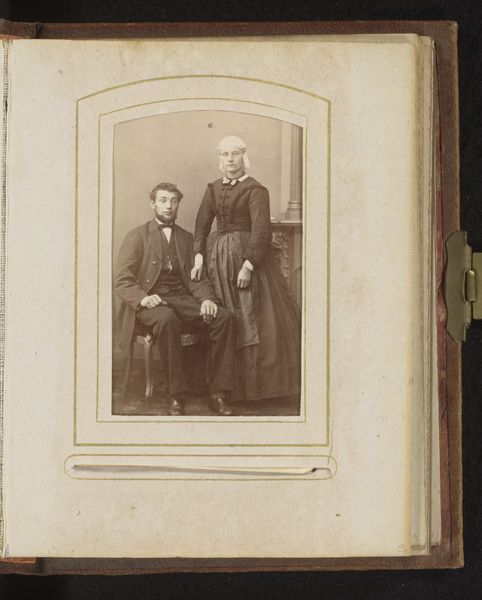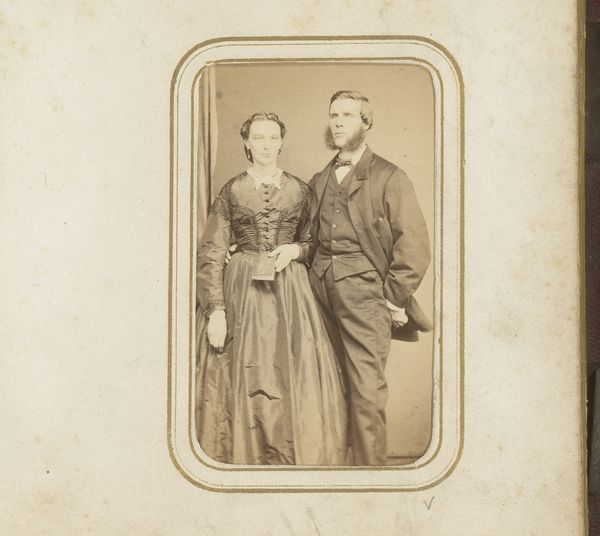
photography
#
photography
#
realism
Dimensions: height 136 mm, width 95 mm
Copyright: Rijks Museum: Open Domain
Curator: Well, this is a captivating portrait of a couple, believed to have been captured between 1860 and 1890 by the photographer Th. Möller. The sepia tones certainly set a stage, don't they? Editor: Immediately, it speaks of respectability, almost a somber dignity. It's the way they carry themselves, stiff but with a hint of closeness in her hand resting on his shoulder. Curator: It's a good example of how photographic portraits became important displays of middle-class status during that period. Family and individual identity became quite linked with these formalized depictions. Editor: Definitely. And there's an air of practicality, reflected perhaps in the starkness. Her dress and hairstyle are modest but immaculately presented. This speaks of restrained values but with a clear eye on presentation. Curator: We see that aesthetic play out quite commonly in Realist artwork. This photograph's plain-spoken style directly serves that era’s rising bourgeois. These were images intended to present an image of upstanding moral character. Editor: Notice how her slightly higher position, combined with the hand on his shoulder, presents the woman in a traditional symbol of gentle, guiding strength. A subtle nod, maybe, to the growing social recognition of women's quiet influence within the family unit. Curator: Certainly. This is what made such portraiture such a commodity. These aren’t just pictures of individuals, but signifiers within a larger socio-economic framework. Look at the backdrop—more than decoration; it’s meant to signal taste and prosperity, setting them apart. Editor: True. They're so serious! No smiles. What cultural weight was placed on maintaining such stoicism in portraits? It suggests an effort to portray themselves as serious, reliable people, projecting an image that they believed would resonate with their peers and descendants. Curator: These stern countenances really solidify the cultural context, I think. Their expressions, though serious, echo values that shaped 19th-century social ideals, like duty, composure and respectability. It really is a study in that. Editor: It's compelling how photography can function as both a personal keepsake and a carefully constructed performance of identity. What stories might we glean if this image could only speak? Curator: Indeed. Analyzing their placement and presentation really provides a compelling look into the era’s prevailing social standards and the evolving role of portraiture. It brings that bygone time back into view for us.
Comments
No comments
Be the first to comment and join the conversation on the ultimate creative platform.
